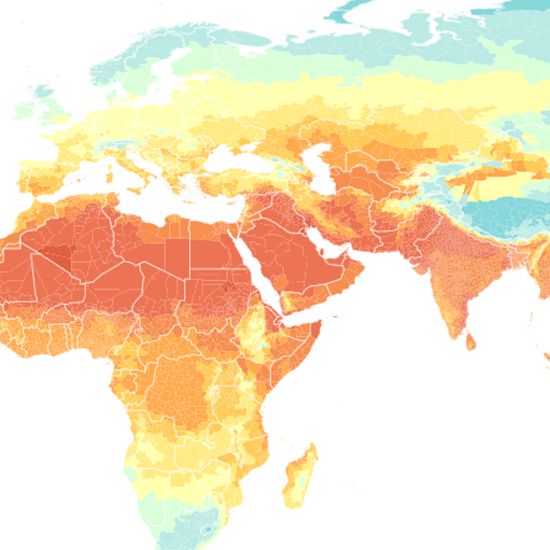The Data-driven Spatial Climate Model
The Data-driven Spatial Climate Impact Model is a robust, empirically based model for estimating the social cost of greenhouse gas emissions for policymaking, developed as part of a multi-year effort by the Climate Impact Lab.
The Data-driven Spatial Climate Impact Model (DSCIM) is a robust, empirically based model for estimating the social cost of greenhouse gas emissions for policymaking. Developed as part of a multi-year effort by the Climate Impact Lab, an interdisciplinary research nonprofit, the model underpins the US Environmental Protection Agency’s framework for regulatory cost-benefit analysis.
DSCIM produces monetized estimates of the net damages from the release of a ton of greenhouse gas emissions—such as carbon dioxide or methane—to human health, agriculture, and other categories of climate change impacts. This SC-GHG estimate is vital in evaluating the benefits and costs of climate policies, with DSCIM underpinning the U.S. Environmental Protection Agency’s regulatory analysis.
DSCIM is grounded in the best available science and economics and was developed by the Climate Impact Lab, an interdisciplinary research nonprofit founded by collaborators at Rhodium Group, the University of Chicago’s Energy Policy Institute, the University of California, Berkeley, and Rutgers University. DSCIM captures detailed, highly resolved impacts of climate change in 24,378 regions globally enabling It is an evolving model, continuously updated to include new categories of climate change impacts and incorporate the latest modeling advances.

Our approach
In the US, the first consistent government-wide value of the social cost of greenhouse gases (SC-GHG) came in 2010 after the Obama administration formed an Interagency Working Group to provide a scientifically robust estimate. Since its release, the metric has played a central role in climate policy both domestically and internationally. However, rapid advances in climate science and economics over the same period created an urgent need to update the SC-GHG to reflect the frontier of knowledge. The Climate Impact Lab formed to meet this challenge, bringing together a team of leading researchers and policy experts.
Through years of interdisciplinary collaboration and peer-reviewed academic publication, the Climate Impact Lab developed the theory, framework, and implementation of DSCIM. Importantly, the model’s estimates of the SC-GHG are derived from empirical estimates of the way climate change impacts human welfare that are based on globally representative, highly resolved data and account for future adaptation. DSCIM’s estimates of the SC-GHG also account for considerable uncertainty about climate change damages, a novel feature in this calculation.
DSCIM’s estimates of the SC-GHG are incorporated into the cost-benefit analysis of climate policies enacted by US states and the federal government. The US Environmental Protection Agency relied on DSCIM as one of three models in its 2023 “Report on the Social Cost of Greenhouse Gases: Estimates Incorporating Recent Scientific Advances,” which was peer reviewed by an external panel of experts. DSCIM’s outputs are also applicable to corporate carbon pricing efforts.
DSCIM will be an evolving model, continuously updated to include new categories of climate change impacts and incorporate the latest advances in science and economics. The DSCIM-EPA User Manual provides an overview of the key components of DSCIM as implemented for the EPA in its updated social cost of carbon estimates, available here.